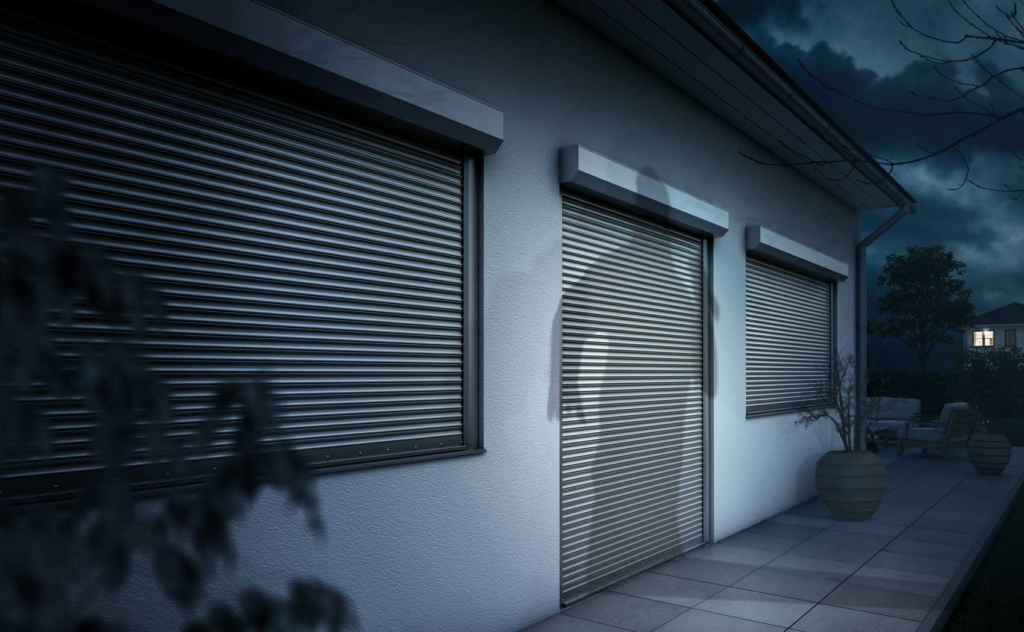
In today’s world, security is more important than ever. Whether you’re protecting your home, business, or commercial property, ensuring that your premises are secure from theft, vandalism, or other security threats is a priority. One of the most effective and widely used solutions for safeguarding properties is the installation of security shutters. This comprehensive guide explores the benefits, types, installation processes, and maintenance of security shutters, offering you the information needed to make an informed decision.
1. What Are Security Shutters?
Security shutters are physical barriers installed over doors, windows, or other entry points to prevent unauthorized access to a building. Made from durable materials such as steel, aluminum, or PVC, these shutters are designed to offer protection against break-ins, extreme weather, and noise pollution. They are often used in commercial, industrial, and residential settings, offering both security and aesthetic appeal.
Security shutters are also known as roller shutters, which operate by rolling up and down, either manually or automatically. These shutters can be fitted externally or internally, depending on the security needs of the property.
2. The Benefits of Security Shutters
Security shutters offer a wide range of benefits that enhance both the physical security and overall protection of properties. Some of the key advantages include:
a) Protection Against Break-ins
One of the primary reasons for installing security shutters is to prevent unauthorized access. The robust and durable construction of security shutters makes it difficult for intruders to break in, providing an added layer of defense. When rolled down, security shutters provide a solid barrier, making it significantly harder for criminals to gain entry into a building.
b) Enhanced Privacy
Security shutters provide privacy by preventing outsiders from looking into your property. This is particularly important in commercial settings or homes located in busy areas. With security shutters in place, you can ensure that your property remains private and secure at all times.
c) Protection from the Elements
In addition to security, security shutters offer protection from extreme weather conditions. They can help prevent damage caused by storms, heavy rainfall, or strong winds. When rolled down, they act as a barrier that protects your windows and doors from debris and other external elements.
d) Noise Reduction
Security shutters are also effective in reducing noise levels from the outside world. Whether you’re located in a busy city center or near a construction site, security shutters can help create a quieter and more peaceful indoor environment by absorbing and deflecting sound.
e) Energy Efficiency
Security shutters contribute to energy efficiency by providing insulation against temperature extremes. During the summer months, they help keep the heat out, while in winter, they act as an additional layer of insulation to retain warmth inside the building. This can reduce the need for heating and cooling, leading to lower energy bills.
f) Aesthetic Appeal
Modern security shutters are designed to complement the aesthetics of your property. Available in a range of finishes, colors, and styles, they can blend seamlessly with the design of your building, adding an elegant touch while maintaining security.
3. Types of Security Shutters
Security shutters come in various types, each suited for specific needs and applications. The main types of security shutters include:
a) Manual Security Shutters
Manual security shutters are operated by hand, typically using a crank or a winding mechanism. While they may require more effort to operate, they are often a more cost-effective option. Manual shutters are ideal for smaller properties or buildings with lower security requirements.
b) Electric or Automatic Security Shutters
Electric security shutters are powered by an electric motor, allowing for easy and convenient operation at the push of a button. These shutters can be controlled via remote control, a wall switch, or even a smartphone app. Automatic shutters are ideal for larger properties or businesses with higher security demands, as they offer convenience and ease of use.
c) Roller Shutters
Roller shutters are one of the most popular and versatile types of security shutters. These shutters are made of interlocking slats that roll up and down, providing a secure barrier when closed. Roller shutters are available in both manual and electric versions and can be installed externally or internally. They are commonly used in commercial properties, warehouses, and garages.
d) Grille Shutters
Grille shutters are designed to provide both security and visibility. They consist of a series of interwoven metal bars or grilles, which allow air and light to pass through while still offering a level of security. Grille shutters are commonly used in shops, storefronts, and other retail spaces where security is essential but visibility is also important.
e) Solid Shutters
Solid security shutters are made from solid panels, providing a complete barrier to entry. These shutters are often used in high-security environments where the priority is protection from intruders rather than visibility. They are commonly installed in areas such as banks, warehouses, and industrial facilities.
f) Insulated Shutters
Insulated security shutters offer the same protection as standard shutters but with the added benefit of enhanced thermal insulation. They are ideal for properties in areas with extreme temperatures, as they help regulate the indoor climate, keeping it cooler in summer and warmer in winter.
4. Choosing the Right Security Shutter for Your Property
Choosing the right security shutter depends on various factors, including the level of security required, the type of property, budget, and aesthetic preferences. Here are some important considerations to help guide your decision:
a) Level of Security
The level of security required will dictate the type of shutter you need. If you’re looking to secure a high-risk commercial property, a solid shutter or an insulated roller shutter may be the best choice. For residential properties or areas with lower security risks, a manual or grille shutter may be sufficient.
b) Property Type
The type of property—whether residential, commercial, or industrial—will influence your choice of security shutter. For example, shops and storefronts often use grille shutters for security and visibility, while larger industrial warehouses may opt for solid or insulated shutters.
c) Budget
Security shutters come in a wide price range, with manual shutters typically being more affordable than electric ones. It’s important to establish a budget before making a decision, keeping in mind that higher-quality shutters may involve a higher initial cost but offer better long-term protection and durability.
d) Aesthetic Considerations
While security is the primary purpose of security shutters, they should also complement the design of your property. Opt for shutters that match your property’s style and color scheme. Many modern security shutters are designed to blend seamlessly with both contemporary and traditional building designs.
5. Installation of Security Shutters
The installation of security shutters is a process that requires expertise and careful planning to ensure that the shutters are properly fitted and function effectively. Here’s a breakdown of the installation process:
a) Site Survey and Measurement
A professional installer will begin by surveying the site to assess the property’s security requirements and measure the dimensions of the windows or doors that require shutters. This is an essential step to ensure that the shutters fit correctly and provide maximum security.
b) Shutter Selection
Based on the site survey and your specific needs, the installer will recommend the most suitable type of security shutter for your property. They will also discuss your preferences in terms of color, style, and operation method.
c) Installation
The installer will then proceed to fit the shutters, ensuring they are securely mounted and operate smoothly. For electric shutters, the electrical components will be installed and connected to the power supply. The entire installation process typically takes a few hours, depending on the complexity and size of the project.
d) Testing and Adjustment
Once the shutters are installed, they will be tested to ensure they function correctly. Any necessary adjustments will be made to ensure smooth operation, and the installer will demonstrate how to use the shutters.
6. Maintenance of Security Shutters
Regular maintenance is essential to keep your security shutters in good working condition. Maintenance tasks may include:
- Cleaning the shutters to prevent dirt and debris from accumulating.
- Checking for any damage or wear and tear.
- Lubricating moving parts to ensure smooth operation.
- Testing electrical components (for automatic shutters) to ensure proper functioning.
It is recommended to schedule professional inspections and servicing at least once a year to ensure the longevity of your security shutters.
7. Conclusion
Security shutters provide an effective and reliable solution for protecting your property from break-ins, extreme weather, and other security threats. With a wide variety of types and options available, there’s a security shutter suitable for every property. By carefully selecting the right shutters, working with experienced installers, and maintaining them regularly, you can enhance the safety, privacy, and value of your home or business.
